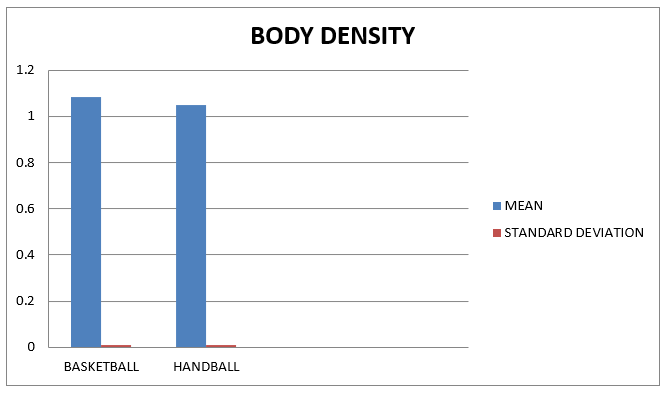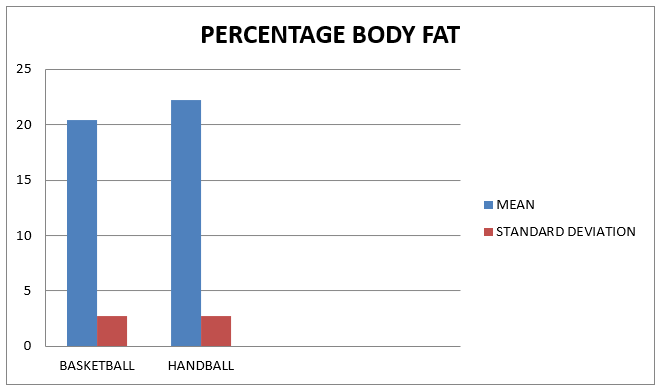INTRODUCTION: When it comes to body size, body composition, which is mostly established by genetic inheritance, can be minimally changed. It may also alter dramatically in response to dietary changes and the presence of a particular exercise regimen. In both medical and sporting professions, figuring out one's body composition is a standard practise. There is a lot of interest in innovative techniques and contemporary ways for calculating body composition. Due to the examination of health condition and evaluation of potential health risks, the amount of fat component is frequently the focus of attention. Exercise has a positive impact on both physical appearance and composition. Physiological load, which includes the effects of physical exercise or sports, is thought to be a component that can affect a person's stature. The morphology of the body, where specific body types correspond to specific sports, is the first thing that spectators notice when comparing athletes from different sports. As a result, today's athletes' constitutions and body types are primarily viewed as a necessary condition and an integral component of the structure of factors that are relevant to athletic performance. One of the components of the physiological profile is the quantification of human body composition, which holds a significant position in the sports population due to its significance in tracking all training and performance goals. Otherwise, major changes in body composition occur during growth and maturation. Boys are twice as likely as females to be fatless during adolescence, while girls are twice as likely to gain weight. Additionally, it is of particular importance to the health community to comprehend the body composition as a whole, including all the variables that might affect the structure of the body, as well as to become familiar with all the health formula. The authors' average values for the body composition measures in junior handball players demonstrate that the handball training programme has an identical effect on these parameters regardless of the sport, competition level, etc. Massive bodily height, together with other essential traits, will give a distinct edge in succeeding in that discipline in some sports (basketball). Similar to how persons of medium height and weight will benefit from undertaking tasks that call for good explosiveness and agility, such as in handball, is that they will succeed more often. The primary objectives of the study are to ascertain the average body composition of athletes
and to ascertain the differences in body composition of athletes competing in various sports, in this case basketball and handball. (Joksimovic K , et al .2021 )
It's important to have some body fat for overall health. It is crucial for maintaining hormone balance, supplying energy, and safeguarding internal organs. A higher risk of conditions including cancer, diabetes, and heart disease is associated with having too much body fat.
OBJECTIVE OF THE STUDY
Evaluation of Body Composition between basketball & handball male Interuniversity Players.
MATERIALS AND METHODS
Design of the study:
The procedure adopted for sampling, tool used, selection of variables, instruments reliability’ administration of the test, collection of the data and description of the various test items and statically techniques used for analysing the data have been discussed.
Sample:
The present study is conducted on 20 male Basketball and 20 male Handball players in the age group of 18 to 27 years who have participated in Inter University Competition session 2022-2023.
Tool Used:
- The weight of the subjects was measured by the help of portable electronic weighing machine.
- The height of the subject’s was measured by the help of Anthropometric Rod.
- The skinfold calliper was used to measure various skin folds.
- Sketch pen was used to mark the measuring area of the muscles of the subject.
Selection of Variables:
- 1. Body density
1.1631-0.0632 x log (Biceps+Triceps+ Sub Scapulr +Suprailiac)
Where x = sum of four skin fold in millimetre converted in logarithms.
(Siri-1956-61) equation has been applied to determine body fat percentage
- Percentage Body Fat


 ©
© 
